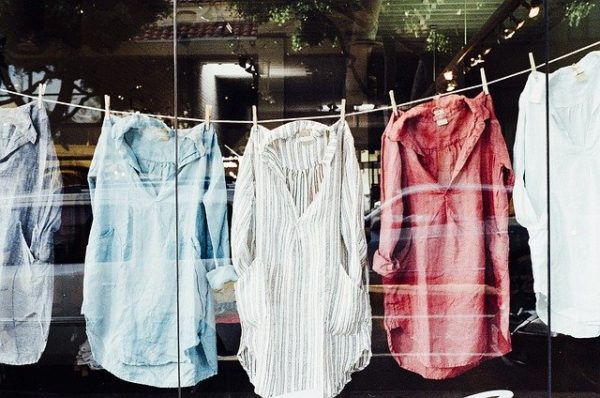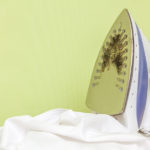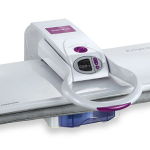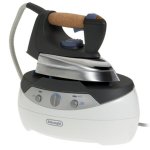This post contains affiliate links which will enable us to earn some commission if you click and buy.

You have done all the hard work and ironed your big pile of laundry. You are sweating after a long period of standing and your arm is tired after all that movement. Then, you look at the results and discovered that some clothes are still wrinkled after ironing. Oh, the frustration of seeing those clothes not being up to standard after all that hard work!
So, how do you prevent it from happening again? How do you get rid of all the creases at the first try so that you don’t have to re-iron each time?
Why Are My Clothes Still Wrinkled After Ironing?
Before we get to the how, we need to understand the why behind this problem. For this, we will have to go back to science. Fabric molecules bond together when the garment is dry and loosen when it is wet. So, after washing and drying, the bonds are re-formed but would be mis-aligned. Hence, wrinkles will form.
When you use a steam iron, the garment becomes damp again to loosen the bonds once more. At the same time, the right level of heat causes the garment to dry and the bonds to re-connect quickly but this time in a better alignment as you smooth it out with the iron. By applying a certain amount of pressure, the creases will then disappear.
Hence, if your clothes are still wrinkled after ironing, chances are you have not loosen the bonds of the fabric molecules effectively. The temperature of your iron could also be set incorrectly that the heat couldn’t make the moisture evaporate easily for the molecules to quickly recover its original alignment.
How To Make The Wrinkles Disappear
Given what we know about the science behind the wrinkles from the above, is it any surprise then that moisture and heat are the keys to wrinkle-free clothes after ironing?
Hence, damp your clothes before you start ironing if you want better results. This is especially true for cotton shirts. In fact, steam may not work as effectively as a spray bottle for this kind of fabric. This is because water droplets from a spray bottle have a larger surface area and stick well on cotton. Hence, the molecule bonds will loosen easier.
Furthermore, try to be patient and let the moisture to sit for a while on the shirt so that it will penetrate deeper into the fabric rather than ironing it immediately after dampening. You can also use your hands to smooth over the shirt which will help in erasing the wrinkles.
Some people will start their ironing process by spraying all their clothes first. So, by the time they are done with the last piece, enough time could have elapsed to then begin ironing the first garment that they have sprayed. It also helps to save a bit of time when done this way.
Use The Right Temperature
Apart from moisture, your iron temperature is just as important in getting rid of wrinkles on your clothes. If your iron is not hot enough, the wrinkles will not disappear because the moisture is not evaporating easily enough for the molecules to quickly re-align. You can go over the same spot numerous times but the wrinkles will still be there leading to user frustration. That is why some people would prefer spending more money to buy the more expensive Rowenta irons because they are known to generate a high level of heat output.
Generally, the higher the temperature, the quicker it is for wrinkles to disappear. However, you can’t be using the same temperature for different materials. For instance, cotton can be ironed at a very hot setting but not polyester. Hence, you have to check your garment labels for washing and ironing instructions to avoid damaging your clothes although it is tempting to turn up the heat level to get rid of creases.
Iron Correctly
Ironing is hard work. But you will make it tougher if you iron incorrectly because you will then be creating new creases as you iron. As a result, your clothes will still be wrinkled after ironing. Hence, smooth out your clothes before you put down the hot iron onto your garment. Learn to do the chore properly through videos or get someone to teach you.
As you practice more, you will end up with better results. Some people find it easier to use a steamer than an iron. A steamer works as long as you are not too fussy over the results. But if you want your shirt to look crisp, you will still have to go back to using a steam iron. Alternatively, you can splurge and get a steam press to do the job.
Wrinkle Remover
Some people use a wrinkle remover to aid their ironing. It helps to make the chore easier as it will loosen the molecule bonds. These products will also tend to have a coating after the substance dries up. This coating is to protect the fabric from wrinkling. So, if you find your clothes are still wrinkled after ironing, try a wrinkle remover to help you with your chore.
For those who are really lazy, there are now wrinkle release sprays that you can buy. These products are supposedly effective in erasing wrinkles with just a few sprays and tugs. Then, simply hang your clothes up and wait for them to dry before wearing.
The alternative to a spray is a wrinkle guard fabric softener. It doesn’t stop wrinkles from forming on your clothes after washing but it should help in the ironing. The wrinkles should be easier to get rid of when you iron then as the fabric would have been softened during washing.
You Can Avoid Ironing If…
It is indeed annoying and frustrating when your clothes are still wrinkled after ironing. That is why many people would just give up on this chore or try to avoid it as far as they can. From buying only wrinkle-free clothes to hanging wrinkled clothes in the shower, people have come up with various ways to avoid ironing.
I guess it can be done as long as you are not too fussy about getting rid of every single crease and line on your clothes. If you need perfection, ironing is still the only solution. Even a steamer would not do for a perfectionist. But if you are willing to lower your standards, ironing can be minimized or even avoided. The question boils down to how far are you willing to compromise on your standards.




Leave a Reply